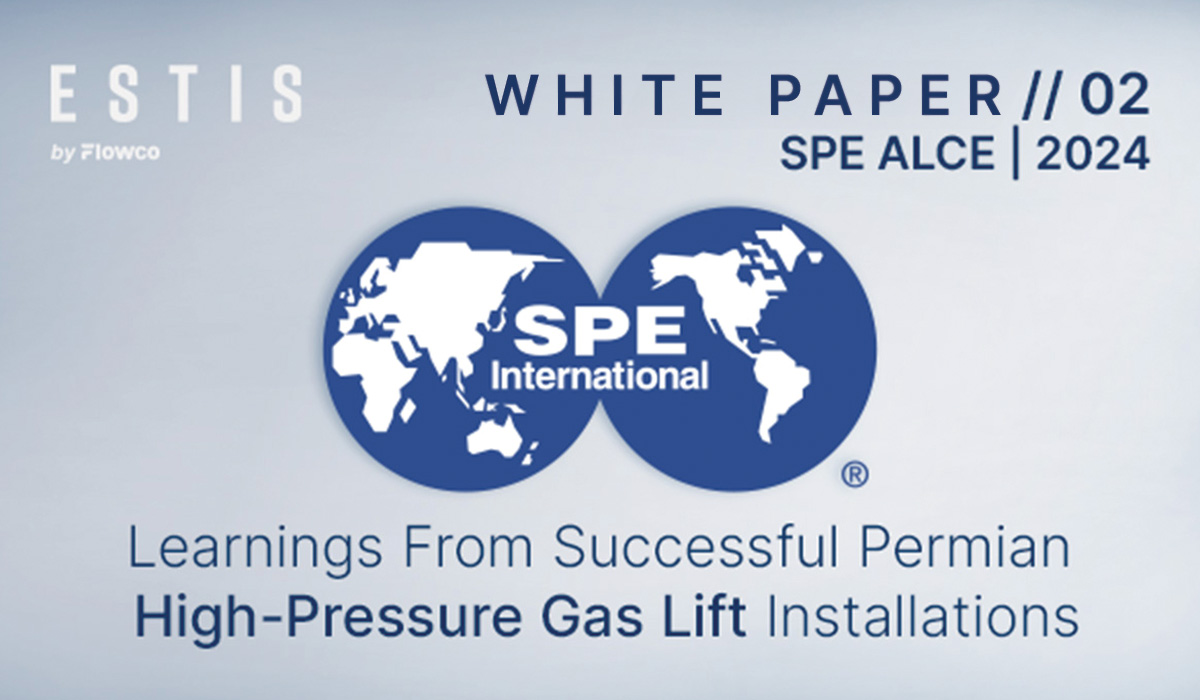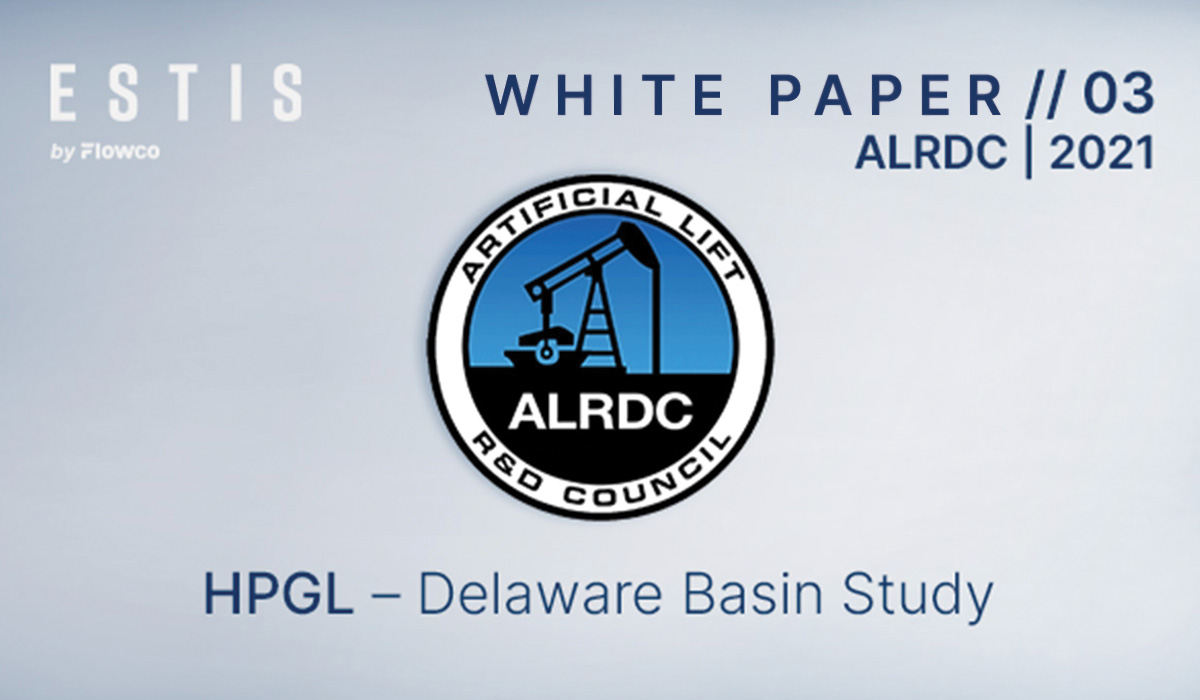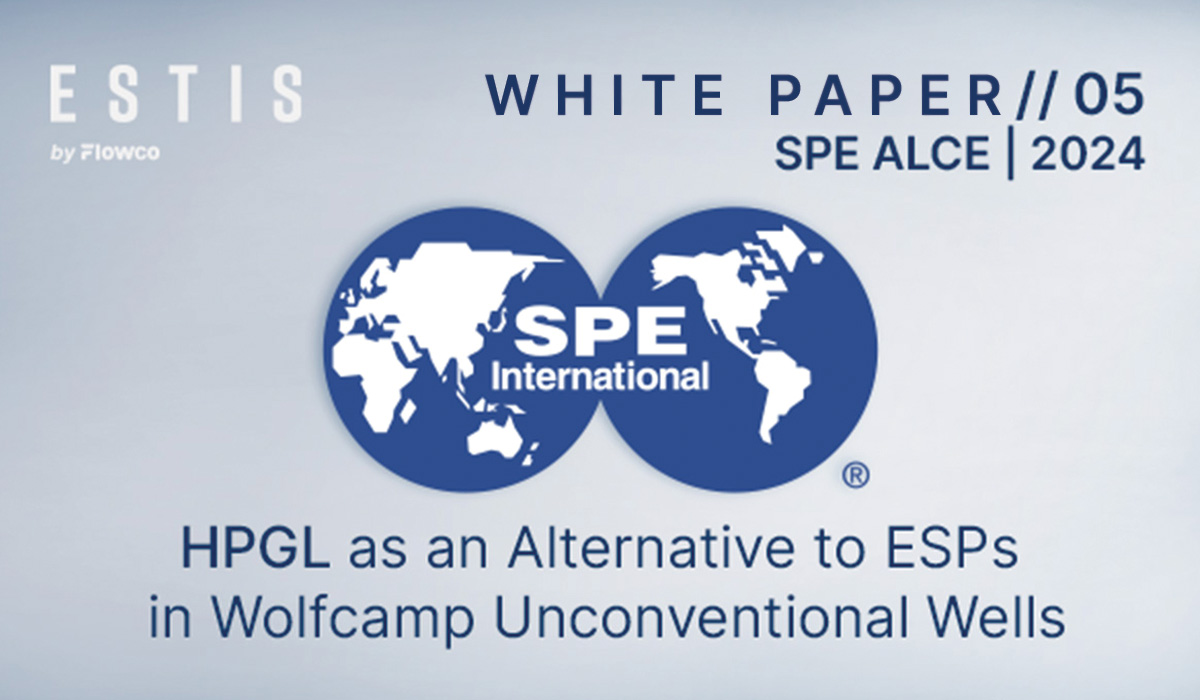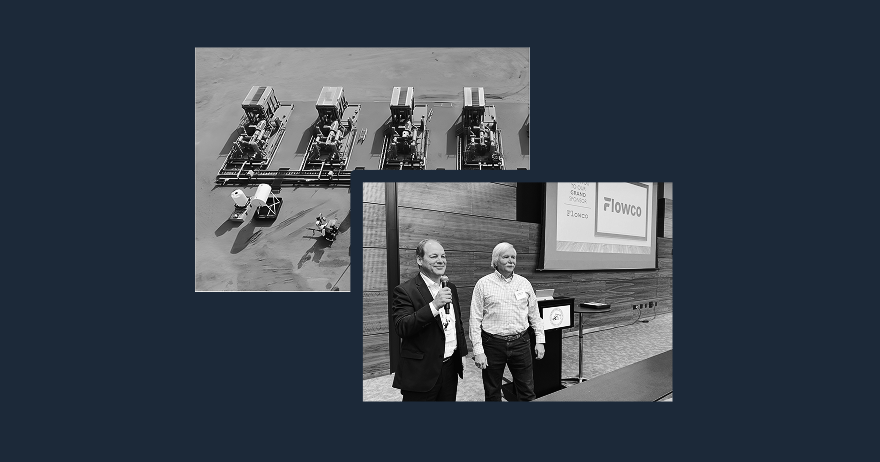
We’re not here to rewrite the rules of gas lift — just raise the standard.
At Estis by Flowco, we’re focused on optimizing oil production and maximizing your bottom line with smarter lift, better uptime, and real performance. If you're an E&P operator, you already know the lift game and you’ve seen the downsides of ESPs firsthand: high failure rates, expensive interventions, and the constant battle with uptime.
What you may not know? High Pressure Gas Lift (HPGL) is outperforming ESPs in unconventional wells across the Permian and beyond — and we've got the data to prove it. These five studies aren’t just wins on paper; they’re real-world, field-tested results that made it to the stages of SPE, SWPSC, ALRDC, and more.
This isn’t theory. It’s what happens when innovation meets execution and when operators choose a smarter lift option. Let’s walk through the wins, starting with where it all began.
The First Study: The Pilot That Sparked The Shift In Artificial Lift
White Paper 01: HPGL as an Alternative to ESP in the Permian Basin
- Co-Author: SM Energy
- Location: Permian Basin
- Year: 2019 Pilot Program
When we kicked off this pilot in 2019, the objective was simple:
Can High Pressure Gas Lift deliver reliable artificial lift without the frequent failures and intervention costs of ESPs?
SM Energy, an established operator with over a century of experience — partnered with Estis to test the idea. The challenge was clear: match or exceed ESP production performance without sacrificing drawdown, and do it with fewer maintenance interruptions and a lower LOE profile.
The Results:
The HPGL unit operated with zero rig intervention, maintained production at a competitive level, and ran longer than comparable ESPs without failure.
 Read the HPGL as an Alternative to ESP in Permian Basin White Paper
Read the HPGL as an Alternative to ESP in Permian Basin White PaperDelaware and Northeastern Basin Studies
White Paper 02: Learnings From Successful High-Pressure Gas Lift Installations
- Co-Author: BPX Energy
- Location: Delaware Basin
- Year: 2022 Pilot Program
BPX Energy wanted answers. Could High-Pressure Gas Lift match the drawdown and production performance of ESPs — while reducing LOE and boosting uptime?
To find out, they launched a 5-well pilot in the Delaware Basin, placing each HPGL well on its own electric 150-hp compressor from Estis. All five were drilled, completed, and brought online in sync and compared against a nearby pad of ESP wells brought online at the same time.
The Results:
- 99%+ runtime after 6 months
- Only one trip across all units in the first 10 months
- Operators loved the reliability: No daily tweaks. Just performance.
“We’ve been really impressed with the Estis compressors… really happy with the uptime. The operators love it. I mean, it’s set it and forget it.”
— Kevin McNeilly, Artificial Lift Optimization Lead, BPX Energy
 Read the HPGL Installations White Paper
Read the HPGL Installations White PaperWhite Paper 03: HPGL – Delaware Basin Study
- Co-Author: Devon Energy
- Location: Delaware Basin – Burton Flat Deep
- Year: 2021 HPGL Application Basin Breakdown
Devon Energy evaluated HPGL performance across a nine-well program in the 3rd Bone Springs formation, comparing two HPGL-equipped wells with seven on conventional gas lift (CGL). The goal: quantify fluid handling, economic value, and uptime between lift methods using real-world pad data over the first 356 days of production.
The Results:
- 37% increase in cumulative total fluid production from HPGL vs. CGL
- 123% higher peak daily total fluid rate in HPGL wells
- 12% uplift in NPV10 for HPGL wells
- 97.7%+ total system availability, with 99.2% mechanical availability
These performance gains were achieved with minimal CAPEX differential, a simplified wellbore design, and higher average injection rates (1,390 mcfd vs. 687 mcfd). HPGL's ability to optimize FBHP through controllable variables like injection rate and lift point depth played a key role in driving production acceleration.
Devon concluded that HPGL offered a high-reliability alternative with greater economic upside leading to continued adoption across their Permian asset base.
 Read the Delaware Basin White Paper
Read the Delaware Basin White PaperWhite Paper 04: Unloading Frac Hits With HPGL From Operator in the Northeast
- Co-Author: Northeast Operator
- Location: Northeast Basin
- Year: Multi-well case history
A Northeast operator turned to Trailer-Mounted High-Pressure Gas Lift (TM HPGL) units to unload frac hits across multiple unconventional gas wells. The goal: reduce time to flowback, avoid costly well entry, and minimize venting or flaring during fluid removal.
The wells spanned a range of measured depths and conditions including packer completions and were all outfitted with 2 7/8” tubing set near maximum TVD. TM HPGL was used as a temporary lift method during critical flowback windows.
The Results:
- Case 1: MD 7,550’ | TVD 7,200’ | Kickoff pressure 2,315 psig | 9 days runtime
- Case 2: MD 9,370’ | TVD 8,980’ | Kickoff pressure 2,924 psig | 34 days runtime
- Case 3: MD 8,660’ | TVD 8,440’ | No kickoff pressure (fluid push) | 2.5 days runtime
Operational Takeaways:
- HPGL provided reliable, unattended operation with minimal personnel
- Suction/discharge controls and remote instrumentation improved safety and responsiveness
- Flexibility of the mobile HPGL setup allowed for tailored lift duration and controlled unloading per well
These cases demonstrated HPGL’s ability to replace nitrogen, swabbing, or CNG for frac hit recovery — with lower cost, no well entry, and full automation readiness.
 Read the Unloading Frac Hits With HPGL White Paper
Read the Unloading Frac Hits With HPGL White PaperRecent Permian Basin Study
White Paper 05: High-Pressure Gas Lift (HPGL) as an Alternative to Electric Submersible Pumps (ESP) in Wolfcamp Unconventional Wells.
- Co-Author: DG Petro Oil & Gas
- Location: Permian Basin
- Year: 2022 Pilot Program
DG Petro needed a better lift method for unconventional Wolfcamp wells dealing with extreme water cut and solids. So they tested HPGL head-to-head with ESP — and let real production, costs, and runtime tell the story. What started as a split-lift test on a single pad became a clear win for HPGL, after ESPs failed not once, but multiple times under solids-heavy conditions.
The Results:
Well 1 (ESP → HPGL):
- Initially outperformed HPGL by 120%, then dropped by half after 1 month
- Suffered two ESP failures within 6 months due to reservoir debris
- Was eventually converted to HPGL after lost equipment and downtime
Well 2 (HPGL):
- Installed April 2022 and ran with 99.5% mechanical availability
- Surpassed ESP production by month 4 (oil) and month 8 (gas)
- Achieved 2.4x ROI by January 2024 due to low Capex and no workovers
Well 3 (ESP → HPGL):
- ESP failed, couldn’t be recovered
- Converted to HPGL in January 2023
- Delivered “remarkable” output despite only 40% of lateral contributing
All three wells now operate on HPGL with consistent production and no work-overs.
“This was a good success story for our company… After losing value in the lateral, to be able to restore more production than we were making before was huge.”
— Stephen Fusselman, Asset Manager, DG Petro Oil & Gas
 Read the HPGL as an Alternative to ESP in Wolfcamp Unconventional Wells Whie Paper
Read the HPGL as an Alternative to ESP in Wolfcamp Unconventional Wells Whie Paper

